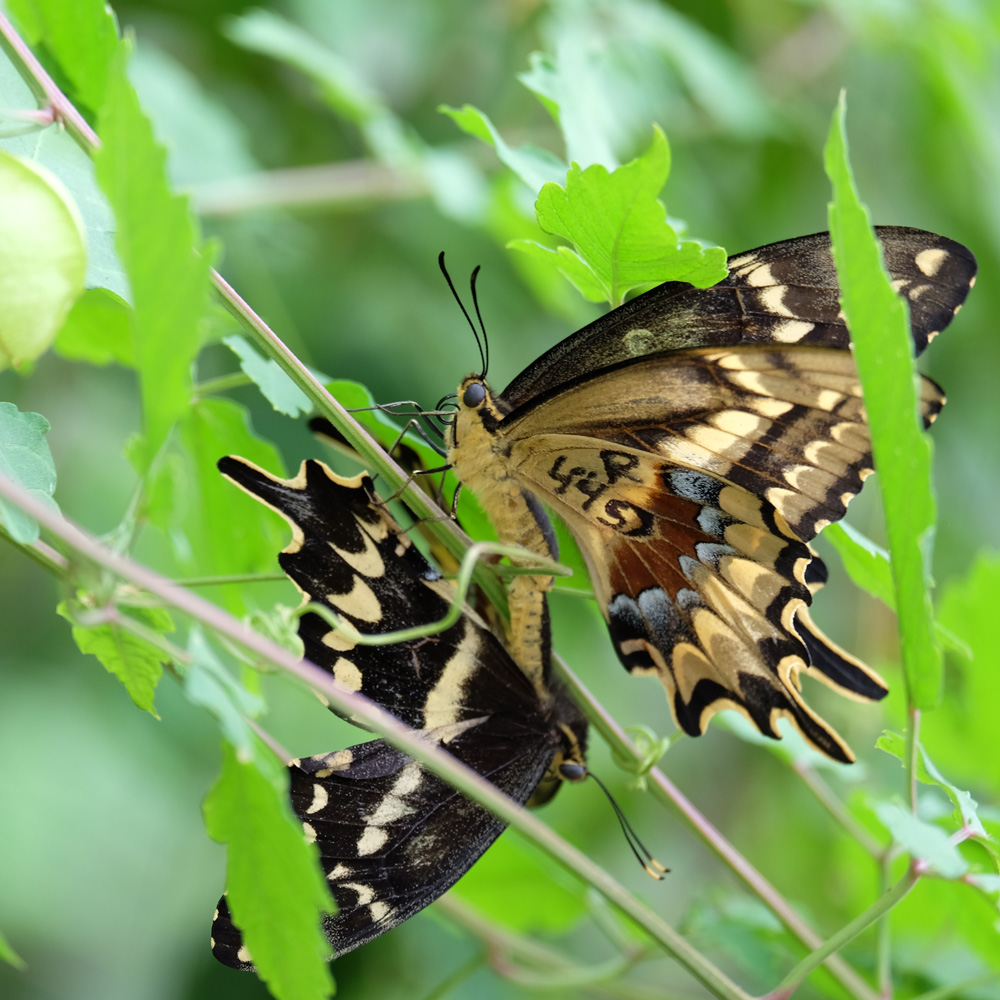
In a hotel room in South Florida, Jaret Daniels fed red Gatorade to twelve brand-new butterflies.
Three had wriggled out of their pupae as Daniels drove down the Florida Turnpike; the others had emerged the day before at his University of Florida lab. In the safety of the Florida Museum of Natural History’s McGuire Center for Lepidoptera and Biodiversity, they had hatched from their eggs and grown from larvae smaller than chocolate sprinkles into butterflies with a wingspan of four inches or more. Tomorrow they would leave his care and fly free.
After their meal, Daniels numbered their lower wings with a Sharpie, slipped them into individual translucent envelopes and placed them in a cooler where they would rest overnight.
The butterflies were Schaus’ swallowtails, a species so rare that few people have seen them in the wild. When a count turned up just four in 2012, UF began a captive breeding program to bring the species back from the brink. This year, Daniels and his colleagues released more than 400 UF-reared Schaus’ in the Florida Keys. Without the program, Daniels says, the species would be hanging on by a very thin thread – if at all.
“I just don’t want to have them in that vortex toward extinction,” he said.
Schaus' swallowtails are vulnerable, but they’re also resilient. They’re cued to emerge from their pupae with the spring rains, but if the weather is too dry, they can hibernate until the next season, or the next. They’re acrobatic flyers that can stop in midair and fly backward. As caterpillars, their coloration protects them by mimicking bird or lizard droppings, but that’s just the beginning of their grosser defenses: They can regurgitate digestive juices and smear predators with smelly goo from a fleshy, antenna-shaped gland that emerges from their heads. Entomologists say it smells like a particularly ripe Parmesan.

Those defenses, however, don’t go far against the threats posed by humans, including the loss of tropical hardwood hammock habitat, pesticides and illegal collectors who pay poachers up to $500 for a perfect pair. Daniels takes all of this into consideration when choosing where to release his brood.
In the morning, in an out-of-the way area at a state park, Daniels opened the cooler as a ranger intercepted curious onlookers. The introduction to the wild didn’t happen majestically, all at once, like releasing doves. Instead, Daniels removed one pair at a time, trying to cajole them into mating — mostly successfully — before sending them on their way. He watched pairs fly up into the tree canopy while a solitary male gathered nectar in a nearby field.
“People always ask, what is the value of a Schaus' swallowtail? Why do they have value beyond simply existing?" he said. "If they disappeared, the system wouldn’t collapse.” But he knows that charismatic species like butterflies — moreso than the wood rats and tree snails who live alongside them — can help generate interest in nature and ultimately open our eyes to the impact we have on our surroundings.
gallery
“If the public learns about the Schaus’ swallowtail, maybe they’ll think about the ecosystem differently. It can connect people back to the environment,” he said.
Daniels hopes to see a day when the butterflies no longer need UF’s help, but until then, he’ll keep giving them every advantage he can.
“When something is lost forever, that’s a travesty,” he said. “That’s not going to happen on my watch.”